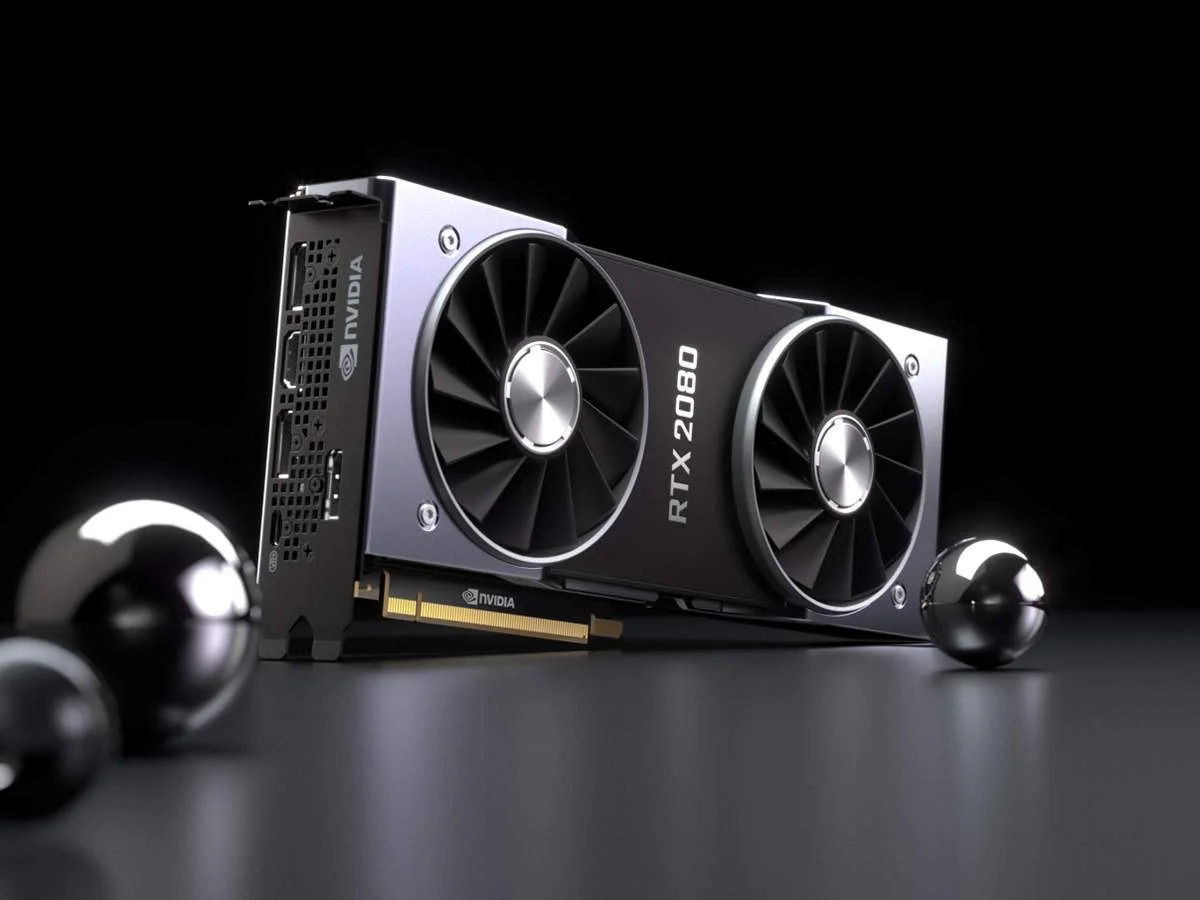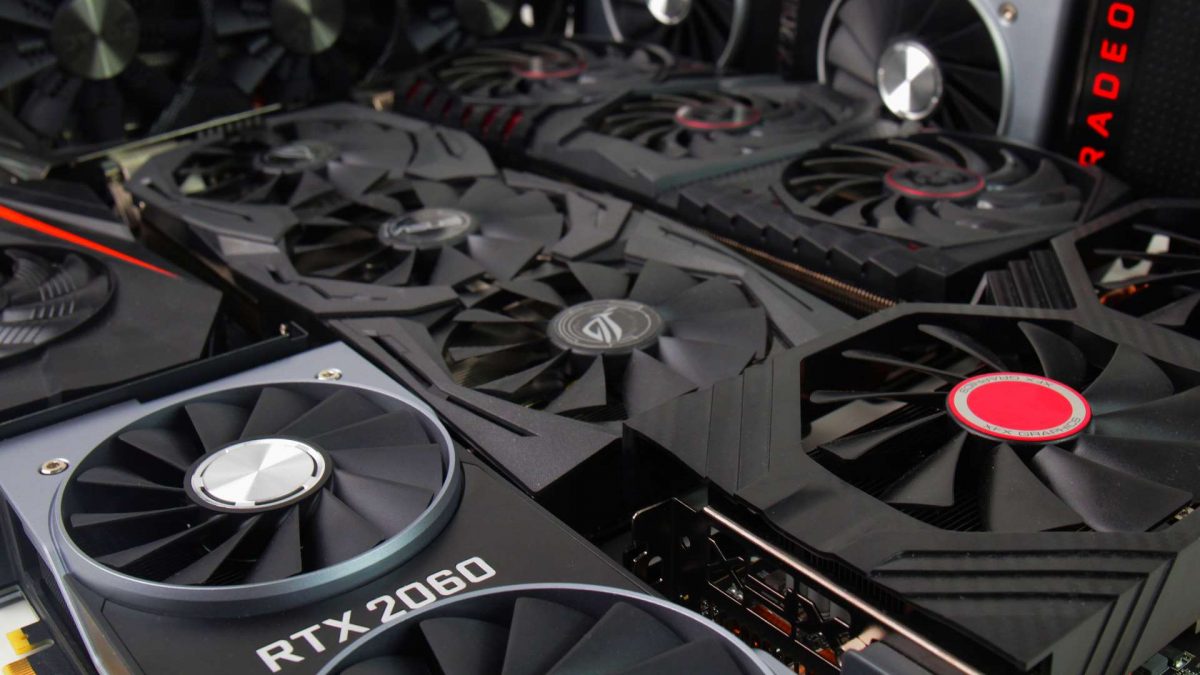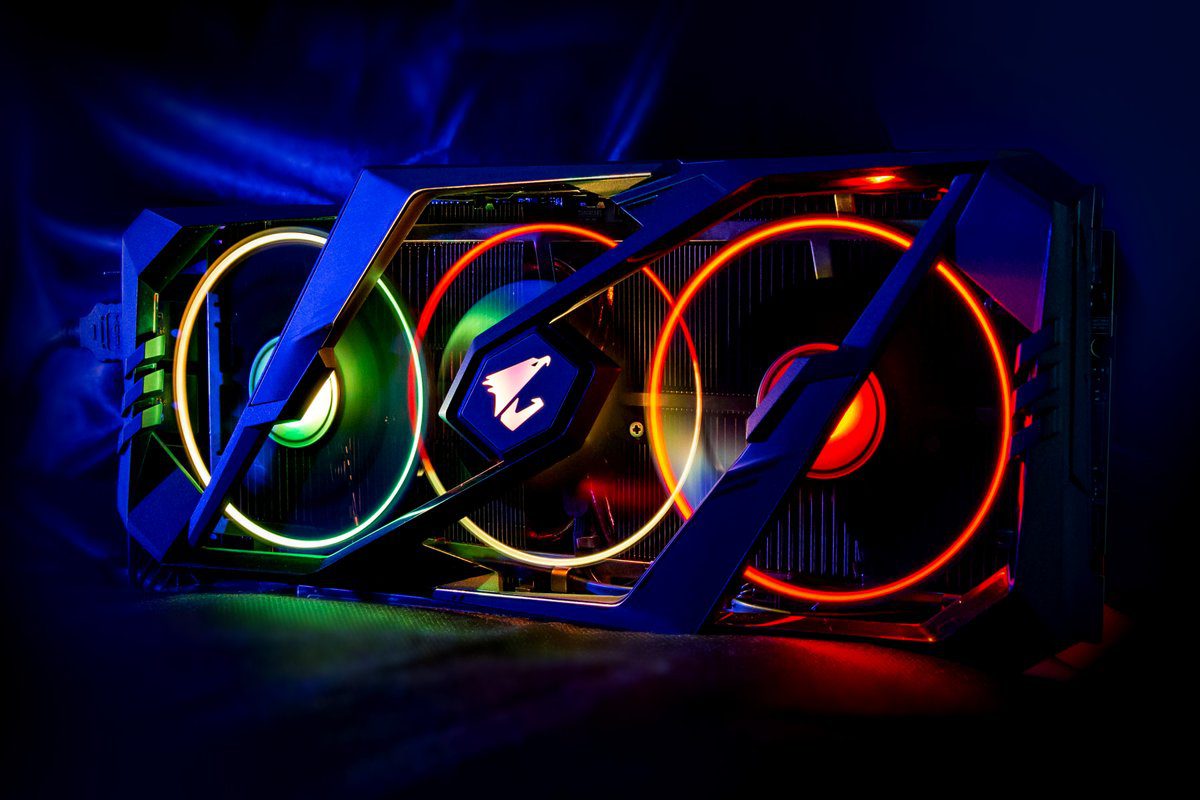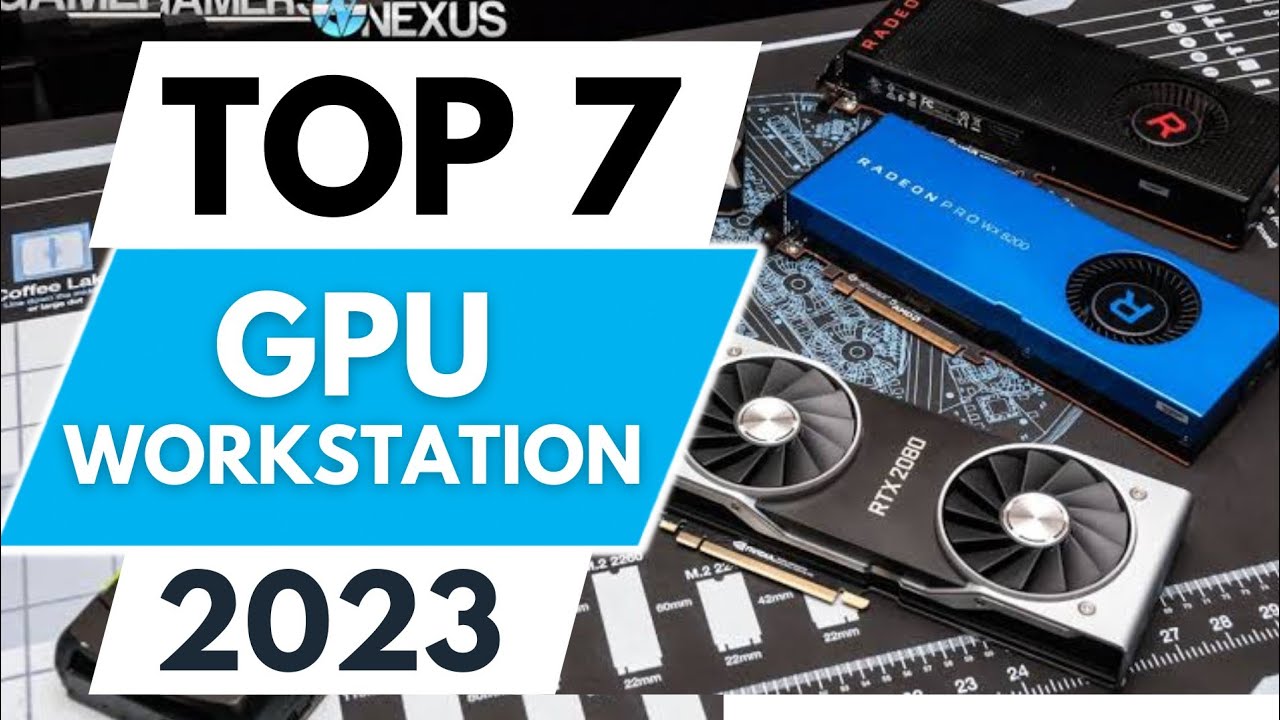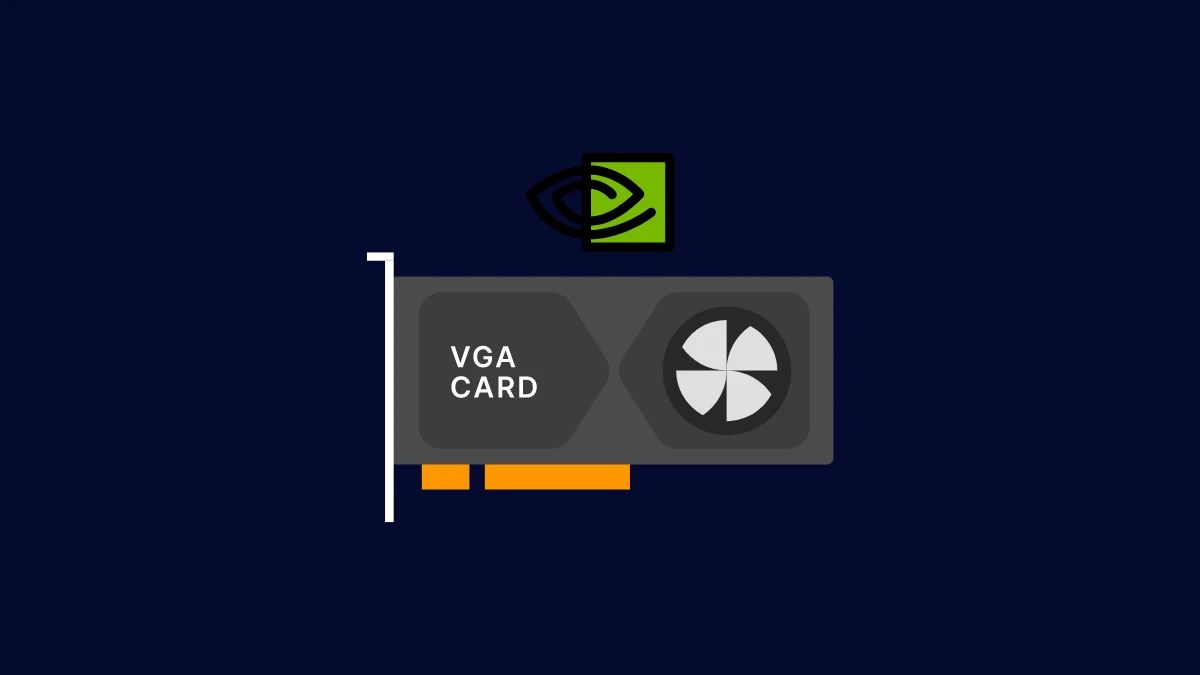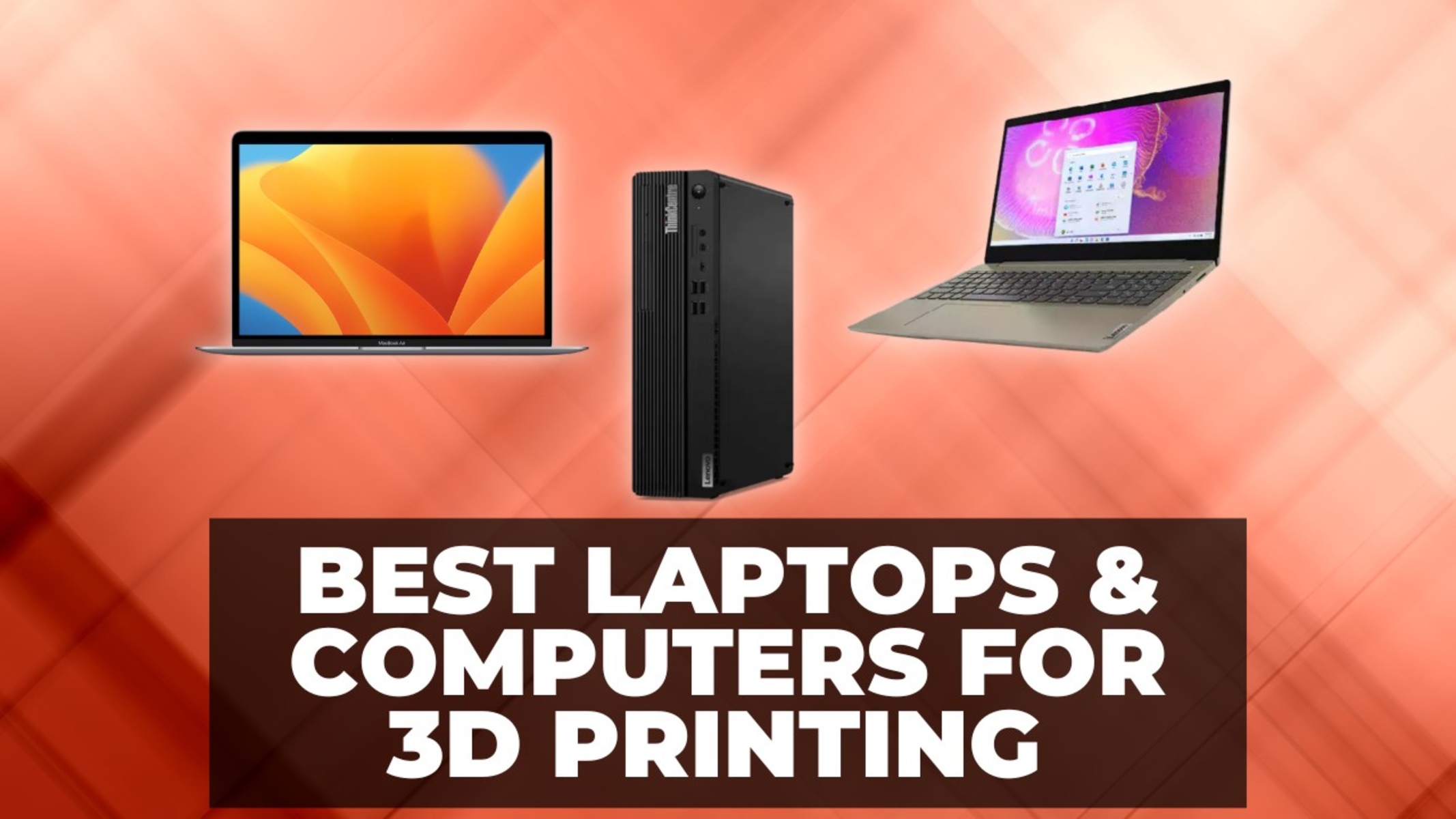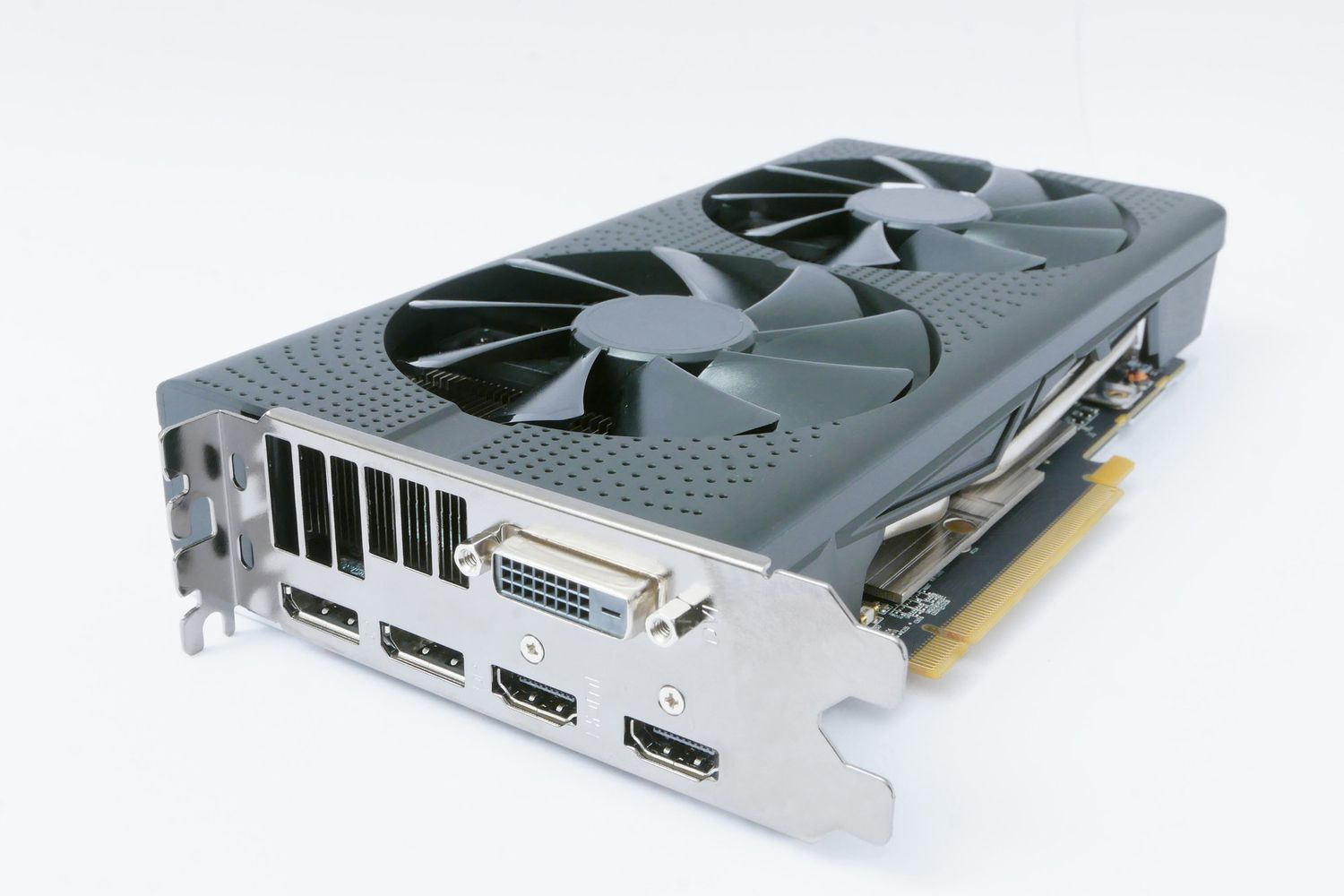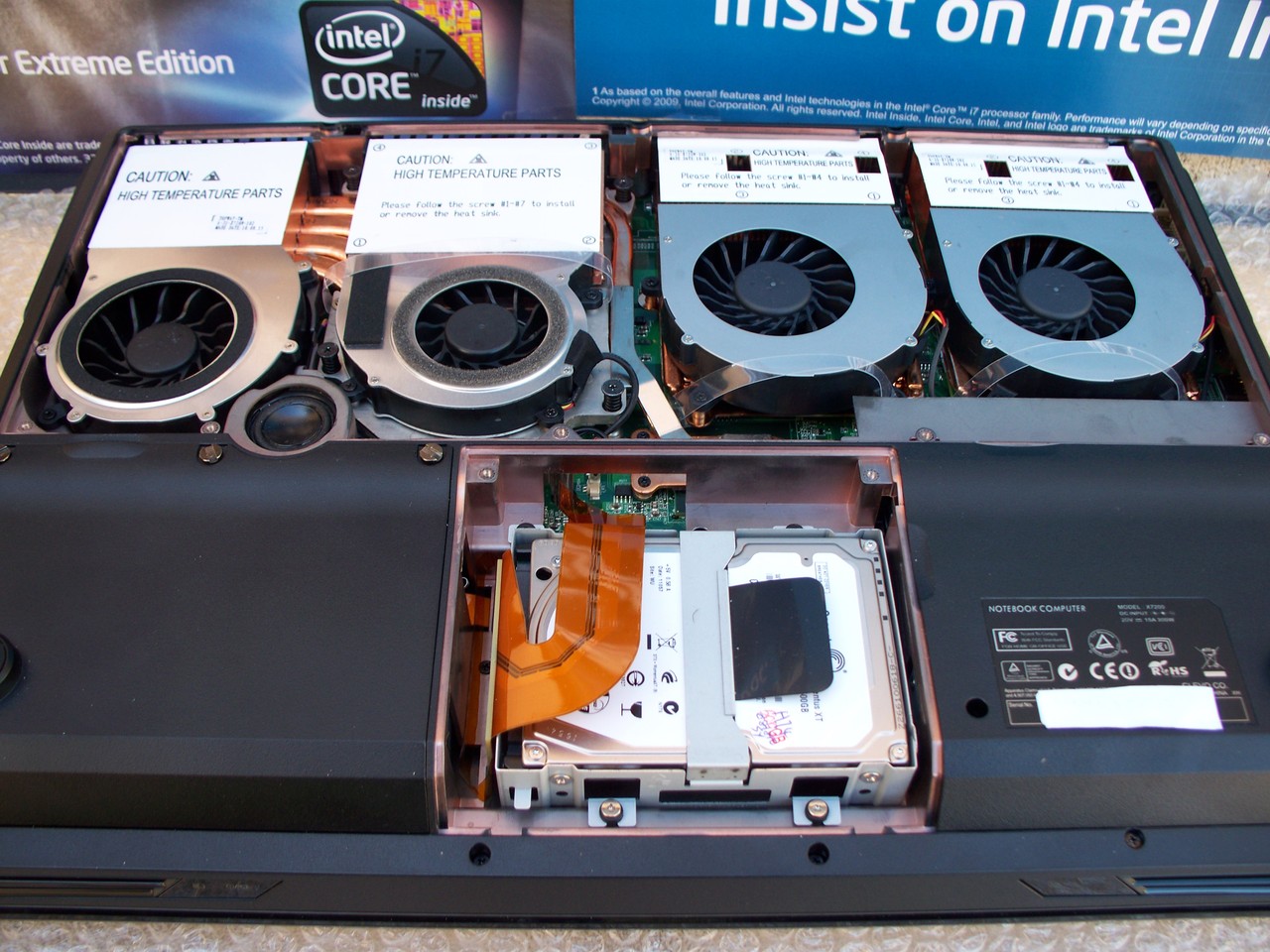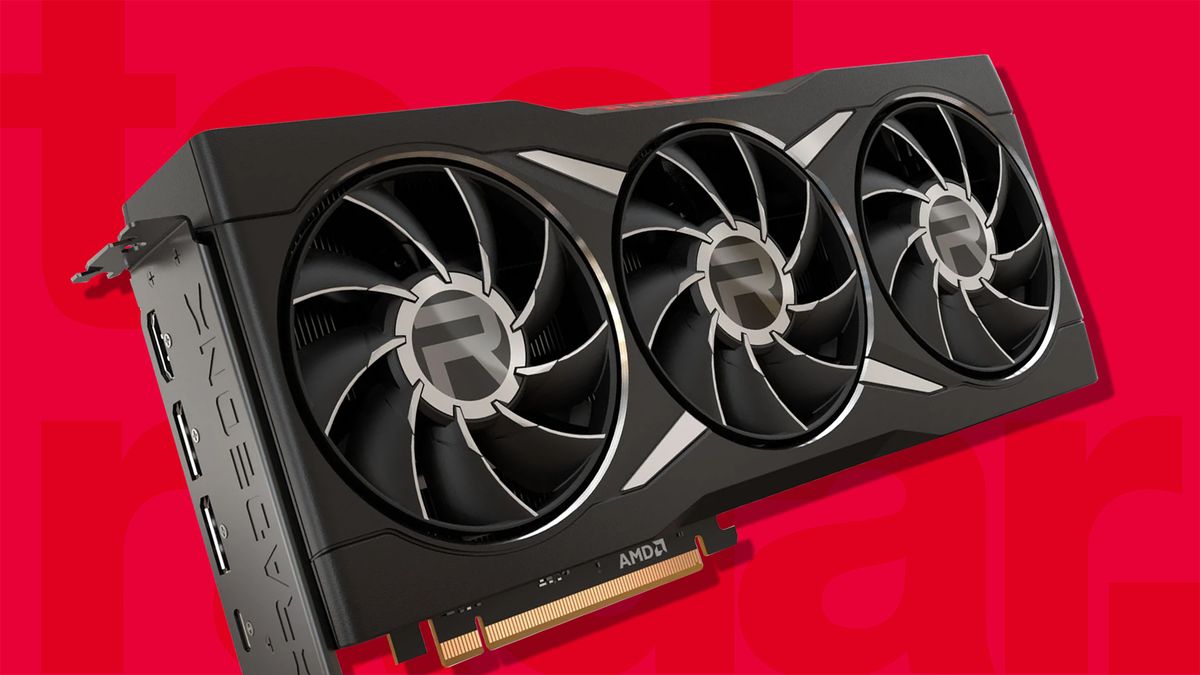Introduction
When it comes to 3D modeling, having the right graphics card can make all the difference. Whether you’re a professional designer, a hobbyist, or a student learning the ropes, a powerful graphics card can greatly enhance your workflow and ensure smooth and realistic rendering of your 3D models.
In this article, we will explore the importance of a graphics card in 3D modeling and highlight some of the best options available on the market. We understand that choosing the right graphics card can be overwhelming, given the vast array of options available, each with its own specifications and features. That’s why we’ve compiled a list of recommended graphics cards specifically tailored for 3D modeling, so you can make an informed decision based on your needs and budget.
Before we dive into the specifics, let’s gain a better understanding of what 3D modeling entails and why having a powerful graphics card is crucial for this type of work.
3D modeling is the process of creating a three-dimensional representation of an object using specialized software. It involves the manipulation of vertices, edges, and faces to create complex shapes, textures, and animations. Whether you’re designing architectural structures, creating characters for games or movies, or developing prototypes for product design, the accuracy and visual fidelity of your 3D models are heavily dependent on the capabilities of your graphics card.
A graphics card, also referred to as a GPU (Graphics Processing Unit), is responsible for rendering and displaying the images and animations generated by the 3D modeling software. Unlike the CPU (Central Processing Unit), which handles general computing tasks, the GPU is specifically designed for processing graphics-related operations at a much faster rate.
Therefore, a high-performance graphics card is essential for handling the complex calculations and rendering requirements of 3D modeling. It allows for real-time manipulation of the 3D models, smooth navigation within the virtual environment, and accurate representation of lighting and textures.
Understanding 3D Modeling
Before delving into the world of graphics cards for 3D modeling, it’s important to have a solid grasp of what 3D modeling entails. Understanding the fundamental concepts and processes will not only enhance your ability to select the right graphics card but also give you a deeper appreciation for the intricacies and possibilities of 3D design.
At its core, 3D modeling is the process of creating three-dimensional digital representations of objects, environments, or characters using specialized software. The goal is to simulate real-life objects or create entirely fictional ones with accurate geometries, textures, and animations.
There are several techniques and approaches to 3D modeling, each with its own set of tools and workflows. These include:
- Primitive Modeling: This technique involves using basic shapes such as cubes, spheres, and cylinders to create initial forms that can be refined later.
- Box Modeling: Box modeling is a popular approach where artists start with a basic 3D mesh, typically a cube or a rectangular shape, and gradually refine it by adding, modifying, and deleting vertices, edges, and faces.
- Spline Modeling: In spline modeling, artists use curves and splines to define the shape of an object. These curves can be manipulated and modified to create complex forms.
- Scanning and Photogrammetry: This technique involves capturing real-world objects or environments using 3D scanning tools or by taking multiple photographs from different angles. The captured data is then processed to create accurate 3D models.
Once the basic shape or structure is established, artists can further enhance their models by adding intricate details such as textures, materials, and lighting. These details bring realism and depth to the 3D models, making them visually appealing and credible.
Creating complex 3D models requires both artistic skills and technical knowledge. Artists need to have a good understanding of anatomy, architecture, or the subject matter they are modeling. Additionally, proficiency in 3D modeling software like Blender, Maya, or 3ds Max is crucial, as these tools provide the necessary tools and features to create, manipulate, and render 3D models.
With the advent of virtual reality (VR) and augmented reality (AR), 3D modeling has become increasingly important in various industries such as gaming, animation, architecture, automotive design, and product visualization. The ability to create realistic and immersive virtual worlds or prototypes relies heavily on the power, speed, and accuracy of the graphics card.
Importance of a Graphics Card in 3D Modeling
When it comes to 3D modeling, the graphics card plays a crucial role in determining the speed, performance, and visual quality of the rendered models. It acts as the powerhouse behind the smooth navigation, real-time manipulation, and realistic representation of lighting, textures, and animations. Let’s explore why having a powerful graphics card is of utmost importance in the world of 3D modeling.
Real-time Rendering: One of the primary advantages of a high-performance graphics card is the ability to achieve real-time rendering. This means that as you make changes to your 3D model, the graphics card can quickly process and display those changes, allowing you to see the results instantly. Without a powerful graphics card, the rendering process can be slow and sluggish, hindering your workflow and creativity.
Complex Calculations: 3D modeling involves complex calculations, such as determining the position, orientation, and shading of every pixel in the model. A graphics card with a robust GPU can handle these calculations efficiently, resulting in faster rendering times and smoother overall performance. This is especially crucial when working with intricate and detailed 3D models that require a significant amount of computational power.
Textures and Lighting: Graphics cards are responsible for rendering realistic textures and lighting effects in 3D models. Whether it’s simulating the reflections on a shiny surface, the translucency of a glass material, or the interaction between light and shadow, a powerful graphics card ensures that these elements are accurately represented. This level of realism enhances the quality and believability of the final rendered image.
Viewport Performance: The viewport is the window where you interact with and manipulate your 3D models. A graphics card with ample horsepower will provide a smooth and responsive experience as you rotate, scale, and navigate through your models. This not only increases your productivity but also allows you to make precise adjustments and view your models from different angles without any lag or stutter.
GPU Rendering: In addition to showcasing real-time changes, a high-performance graphics card can also be utilized for GPU rendering. GPU rendering utilizes the processing power of the graphics card to accelerate the rendering process, resulting in significantly faster render times compared to traditional CPU rendering. This enables artists to quickly iterate and refine their designs without unnecessary delays.
Multiple Displays and Monitors: Many 3D modeling workflows require the use of multiple displays or monitors. A graphics card with support for multiple displays can greatly enhance productivity by providing an extended workspace. This allows artists to have their 3D modeling software, reference materials, and other tools open simultaneously, improving efficiency and workflow management.
Overall, a powerful graphics card is a vital component in any 3D artist’s toolkit. It provides the necessary processing power to handle the demanding calculations and rendering requirements of 3D modeling. By investing in a high-quality graphics card, you can unlock your creativity, improve workflow efficiency, and produce stunning and realistic 3D models.
Factors to Consider
When choosing a graphics card for 3D modeling, there are several key factors to consider. Understanding these factors will help you make an informed decision that aligns with your specific needs and budget. Let’s explore the essential factors to consider when selecting a graphics card for 3D modeling:
Performance: The performance of a graphics card is determined by its GPU specifications, such as the number of CUDA cores (for NVIDIA cards) or stream processors (for AMD cards), clock speed, and memory bandwidth. Look for a graphics card that offers high performance to handle the complex calculations and rendering requirements of 3D modeling smoothly.
Memory: The graphics card’s memory, known as VRAM (Video Random Access Memory), plays a crucial role in storing and accessing data required for rendering textures, models, and animations. Opt for a graphics card with ample VRAM to ensure efficient handling of large and complex 3D models.
Compatibility: Ensure that the graphics card you choose is compatible with your computer system. Consider factors such as the compatibility with your motherboard, power requirements, and available expansion slots (PCIe) for installation.
Software Compatibility: Different 3D modeling software may have different requirements and optimizations for graphics cards. Check the software manufacturer’s specifications to ensure compatibility and optimal performance with your chosen graphics card.
Price: Budget is an important consideration when selecting a graphics card. Determine your price range and look for a graphics card that offers the best performance and features within your budget. Keep in mind that while high-end graphics cards may offer superior performance, they also come with a higher price tag.
Future Proofing: Consider future upgrades and advancements in 3D modeling technology. Investing in a graphics card with sufficient power and features to meet your needs not only in the present but also in the future can save you from having to upgrade too frequently.
Cooling and Power Consumption: Take into account the cooling mechanism of the graphics card, as higher-performing cards tend to generate more heat. Look for cards with efficient cooling systems that keep temperatures in check. Additionally, consider the power requirements of the graphics card and ensure that your power supply can handle it without any issues.
Reviews and Recommendations: Before making a final decision, read reviews and seek recommendations from industry professionals, forums, and trusted sources. Real-world experiences and feedback can provide valuable insights into the performance, reliability, and compatibility of different graphics card models.
By considering these factors and weighing them according to your specific needs, you can find a graphics card that strikes the right balance between performance, compatibility, and price, enabling you to unleash your creativity and maximize the potential of your 3D modeling endeavors.
Recommended Graphics Cards for 3D Modeling
Choosing the right graphics card for 3D modeling can be a daunting task due to the vast array of options available. To help simplify your decision-making process, we have compiled a list of recommended graphics cards that offer excellent performance and features for 3D modeling:
NVIDIA GeForce RTX 3090: The NVIDIA GeForce RTX 3090 is a powerhouse when it comes to 3D modeling. With its massive 24GB of VRAM and 10496 CUDA cores, it delivers exceptional performance and can handle even the most demanding 3D modeling tasks with ease. It also supports real-time ray tracing and AI-powered rendering, further enhancing the visual quality of your work.
AMD Radeon RX 6900 XT: The AMD Radeon RX 6900 XT is another top contender for 3D modeling. With 16GB of VRAM and 5120 stream processors, it offers impressive performance and efficiency. Its high memory bandwidth and advanced cooling design make it an excellent choice for intensive 3D modeling workloads.
NVIDIA GeForce RTX 3080: The NVIDIA GeForce RTX 3080 is a popular choice among 3D artists. With 10GB of VRAM and 8704 CUDA cores, it delivers exceptional performance and can handle complex 3D models and real-time rendering efficiently. Its advanced cooling system and power efficiency further enhance its appeal.
AMD Radeon RX 6800 XT: The AMD Radeon RX 6800 XT is a formidable graphics card for 3D modeling. With its 16GB of VRAM and 4608 stream processors, it provides excellent performance and rendering capabilities. It also supports AMD’s advanced features like Smart Access Memory and Infinity Cache, enhancing overall performance in compatible systems.
NVIDIA GeForce RTX 3070: The NVIDIA GeForce RTX 3070 is a more affordable option without compromising performance. With 8GB of VRAM and 5888 CUDA cores, it offers excellent performance and value for 3D modeling. Its power efficiency and support for ray tracing make it a solid choice for professionals and enthusiasts alike.
These graphics cards are just a few examples of the many options available for 3D modeling. Consider your specific needs, budget, and the software you will be using to make the best choice. Remember, investing in a high-quality graphics card can significantly improve your 3D modeling workflow and ensure smooth rendering, realistic visuals, and efficient handling of complex 3D models.
NVIDIA GeForce RTX 3090
The NVIDIA GeForce RTX 3090 is a top-of-the-line graphics card that offers unparalleled performance for 3D modeling. This flagship GPU from NVIDIA boasts an impressive 24GB of GDDR6X VRAM, making it suitable for handling large-scale, complex 3D models with ease. With a staggering 10496 CUDA cores, it delivers exceptional computational power, allowing for smooth real-time rendering and manipulation of your models.
The RTX 3090’s advanced architecture and powerful AI capabilities enable features like real-time ray tracing and AI-powered rendering. This translates to more accurate and realistic lighting effects, reflections, and shadows in your 3D models. The card’s tensor cores contribute to faster deep learning inference performance, making it a solid choice for AI-driven workflows in 3D modeling applications.
In terms of performance, the RTX 3090 shines in both single-threaded and multi-threaded tasks. Its high boost clock speed ensures speedy rendering, reducing downtime and increasing productivity. With its massive memory bandwidth, the card easily handles the memory-intensive requirements of complex 3D models, resulting in fluid and seamless navigation within your 3D workspace.
Furthermore, the RTX 3090 comes equipped with advanced cooling technology, including a triple-fan design and a robust heat sink. This efficient cooling solution allows the card to maintain optimal operating temperatures even during long rendering sessions. The reduced heat and noise levels contribute to a more comfortable and distraction-free working environment.
However, it’s important to note that the RTX 3090 comes with a higher price tag compared to other graphics cards. Its top-tier performance and cutting-edge features are reflected in its cost. While this may make it less accessible for budget-conscious users, the investment in the RTX 3090 can yield significant benefits for professional 3D artists, designers, and other power users who require the utmost performance and capabilities.
In summary, the NVIDIA GeForce RTX 3090 sets the bar high for graphics cards used in 3D modeling. Its superior performance, massive VRAM capacity, and advanced features make it an excellent choice for handling intensive 3D modeling workloads, real-time rendering, and AI-powered applications. If you require uncompromising performance and have the budget for it, the RTX 3090 is definitely a graphics card worth considering for your 3D modeling needs.
AMD Radeon RX 6900 XT
The AMD Radeon RX 6900 XT is a high-end graphics card that offers exceptional performance and features for 3D modeling. With its impressive 16GB of GDDR6 VRAM and 5120 stream processors, the RX 6900 XT delivers outstanding computational power, making it an ideal choice for handling complex 3D modeling tasks with ease.
The RX 6900 XT utilizes AMD’s advanced RDNA 2 architecture, which provides significant performance improvements compared to previous generations. The card’s high clock speeds and large memory bandwidth contribute to fast rendering and real-time manipulation of 3D models, resulting in a smooth and efficient workflow.
One of the standout features of the RX 6900 XT is its support for hardware-accelerated ray tracing, thanks to the inclusion of AMD’s ray tracing technology. This allows for more realistic lighting effects, shadows, and reflections in your 3D models, enhancing their visual fidelity and overall realism.
In addition to its impressive performance, the RX 6900 XT boasts advanced cooling solutions to maintain optimal operating temperatures even during demanding workloads. Its triple-fan design and efficient heat dissipation ensure that the card runs cool and quiet, minimizing distractions and providing a comfortable working environment.
Furthermore, the RX 6900 XT is equipped with technologies like Smart Access Memory and Infinity Cache, which work together to improve performance and enhance memory efficiency. These features contribute to faster access to graphics memory, resulting in improved rendering speeds and overall responsiveness.
The RX 6900 XT is a top-tier graphics card and, as such, comes with a higher price point. However, its impressive performance and advanced features make it a worthy investment for professional 3D artists and designers who require top-of-the-line performance for their work. It offers excellent value for those seeking uncompromising performance and advanced capabilities in 3D modeling.
In summary, the AMD Radeon RX 6900 XT offers exceptional performance, advanced ray tracing capabilities, and efficient cooling solutions for 3D modeling. Its high computational power and large VRAM capacity make it a powerful tool for handling complex 3D models and rendering tasks. If you’re looking for a high-end graphics card that delivers outstanding performance and supports the latest technologies, the RX 6900 XT is a strong contender for your 3D modeling needs.
NVIDIA GeForce RTX 3080
The NVIDIA GeForce RTX 3080 is a highly capable graphics card that offers exceptional performance and features for 3D modeling. With its 10GB of GDDR6X VRAM and 8704 CUDA cores, the RTX 3080 delivers impressive computational power, enabling smooth real-time rendering and efficient handling of complex 3D models.
The RTX 3080 is built on NVIDIA’s Ampere architecture, which provides significant improvements in performance and power efficiency compared to previous generations. Its high boost clock speed ensures fast rendering times, allowing for quick iterations and reduced downtime during the 3D modeling process.
One of the standout features of the RTX 3080 is its support for real-time ray tracing. This technology simulates the behavior of light in 3D environments, resulting in more realistic lighting effects, shadows, and reflections. Ray tracing greatly enhances the visual quality of your 3D models, making them appear more natural and lifelike.
In addition to ray tracing, the RTX 3080 also supports AI-powered rendering through NVIDIA’s Deep Learning Super Sampling (DLSS) technology. DLSS utilizes machine learning algorithms to upscale lower-resolution images in real-time, producing higher-quality results while maintaining a smooth performance. This feature is particularly beneficial for achieving high-quality visuals in demanding 3D modeling scenarios.
The RTX 3080 features advanced cooling solutions, including a robust heat sink and a triple-fan design. This efficient cooling system keeps temperatures low, ensuring optimal performance even during extended 3D modeling sessions. The reduced heat and noise levels contribute to a comfortable and distraction-free working environment.
Despite its exceptional performance, the RTX 3080 comes with a more accessible price point compared to higher-end graphics cards. This makes it an attractive choice for a wide range of 3D artists, designers, and enthusiasts who seek a balance between performance and cost-effectiveness.
In summary, the NVIDIA GeForce RTX 3080 offers outstanding performance, real-time ray tracing capabilities, and advanced cooling solutions for 3D modeling. Its ample VRAM and powerful GPU enable smooth and efficient rendering of complex 3D models. If you’re looking for a high-performance graphics card that delivers excellent value and supports the latest technologies, the RTX 3080 is undoubtedly a strong contender for your 3D modeling needs.
AMD Radeon RX 6800 XT
The AMD Radeon RX 6800 XT is a high-performance graphics card that offers excellent capabilities for 3D modeling. With its 16GB of GDDR6 VRAM and 4608 stream processors, the RX 6800 XT delivers impressive rendering power, making it suitable for handling complex 3D models with ease.
Powered by AMD’s advanced RDNA 2 architecture, the RX 6800 XT offers significant performance improvements compared to previous generations. Its high clock speeds and large memory bandwidth enable fast rendering and smooth real-time navigation within 3D modeling environments, enhancing productivity and workflow efficiency.
The RX 6800 XT’s support for hardware-accelerated ray tracing adds a new level of realism to your 3D models. The technology accurately simulates the behavior of light, resulting in more natural lighting effects, reflections, and shadows. This contributes to visually stunning and lifelike 3D graphics for immersive and detailed modeling experiences.
In addition to its rendering abilities, the RX 6800 XT supports advanced features like Smart Access Memory and Infinity Cache. Smart Access Memory enables a direct data access between the CPU and GPU, leading to improved performance by minimizing data bottlenecks. The Infinity Cache works as a high-speed cache, delivering faster and more efficient memory performance, which can boost overall rendering and modeling speeds.
The RX 6800 XT incorporates an efficient cooling solution with its triple-fan design and advanced heat dissipating technology. This ensures that the card maintains optimal operating temperatures, even during intensive 3D modeling tasks, preventing thermal throttling and maintaining consistent performance levels.
Moreover, the RX 6800 XT offers a competitive price point compared to other high-end graphics cards, making it an attractive option for 3D artists, designers, and professionals seeking both performance and value. The advanced features, impressive rendering capabilities, and cost-effectiveness make the RX 6800 XT a strong contender for demanding 3D modeling workflows.
In summary, the AMD Radeon RX 6800 XT provides exceptional performance, hardware-accelerated ray tracing support, and advanced features for 3D modeling. With its powerful GPU and ample VRAM, it offers seamless rendering, real-time navigation, and enhanced visual fidelity. If you’re searching for a high-performance graphics card that delivers exceptional value for your 3D modeling needs, the RX 6800 XT is definitely a strong contender to consider.
NVIDIA GeForce RTX 3070
The NVIDIA GeForce RTX 3070 is a powerful and cost-effective graphics card that offers excellent performance for 3D modeling. With its 8GB of GDDR6 VRAM and 5888 CUDA cores, the RTX 3070 delivers impressive computational power and rendering capabilities, making it a solid choice for handling complex 3D models.
Based on NVIDIA’s Ampere architecture, the RTX 3070 offers significant improvements in performance and efficiency compared to its predecessors. Its high boost clock speed enables fast rendering and smooth real-time navigation within 3D modeling environments, allowing for efficient workflows and reduced downtime.
The RTX 3070 supports real-time ray tracing, which simulates the behavior of light in 3D environments, resulting in realistic lighting effects, shadows, and reflections. This enhances the visual quality of your 3D models, making them more visually appealing and immersive.
In addition to ray tracing, the RTX 3070 also includes dedicated AI Tensor Cores, enabling features like DLSS (Deep Learning Super Sampling). DLSS utilizes machine learning algorithms to upscale lower-resolution images in real-time, providing higher-quality output while maintaining smooth performance, which can be advantageous for achieving high-quality visuals in demanding 3D modeling scenarios.
The RTX 3070 features an efficient cooling system, with a combination of a dual-fan design and advanced heat dissipation techniques. This ensures that the card remains cool and stable even during intense 3D modeling sessions, preventing thermal throttling and maintaining optimal performance levels.
Furthermore, the RTX 3070 offers an attractive price point, making it an accessible option for entry-level and mid-range 3D artists, designers, and enthusiasts. Its performance-to-price ratio makes it an attractive choice for those seeking a balance between performance and affordability.
In summary, the NVIDIA GeForce RTX 3070 delivers excellent performance, real-time ray tracing capabilities, and AI-enhanced features for 3D modeling. Its ample VRAM, powerful GPU, and competitive price make it a solid choice for handling complex 3D models, rendering tasks, and achieving high-quality visuals. If you’re looking for an affordable yet powerful graphics card for your 3D modeling needs, the RTX 3070 is certainly worth considering.
Conclusion
In the world of 3D modeling, having the right graphics card is paramount for achieving optimal performance, realistic visuals, and efficient handling of complex models. After understanding the importance of a graphics card in 3D modeling, considering various factors such as performance, compatibility, and price, and exploring some recommended options, you are now equipped to make an informed decision that suits your specific needs and budget.
The NVIDIA GeForce RTX 3090 offers unrivaled performance and features for high-end 3D modeling, with its massive VRAM capacity and powerful GPU. For those looking for top-tier performance and advanced capabilities, this graphics card is an excellent choice.
The AMD Radeon RX 6900 XT and NVIDIA GeForce RTX 3080 both deliver exceptional performance and support features like ray tracing and AI-powered rendering. These cards are well-suited for demanding 3D modeling tasks and provide excellent value for their performance-to-price ratio.
The AMD Radeon RX 6800 XT and NVIDIA GeForce RTX 3070 offer a balance of performance and affordability, making them appealing options for both professionals and enthusiasts seeking cost-effective solutions without compromising on performance.
Ultimately, the right graphics card for 3D modeling depends on your specific requirements, budget, and preference for certain features. Consider the software compatibility, future-proofing, and cooling capabilities of the graphics card to ensure optimal performance and longevity.
By investing in a powerful and well-suited graphics card, you can elevate your 3D modeling workflow, enhance productivity, and bring your creative visions to life with stunning realism and detail. Keep in mind that the graphics card is just one component of a comprehensive setup that includes other hardware, such as a powerful CPU and sufficient RAM, to fully optimize your 3D modeling experience.
Whether you’re a professional designer, hobbyist, or student, the right graphics card can make a significant difference in your 3D modeling journey. So take your time to research, compare, and evaluate the options available, and choose the one that best aligns with your needs and aspirations.







